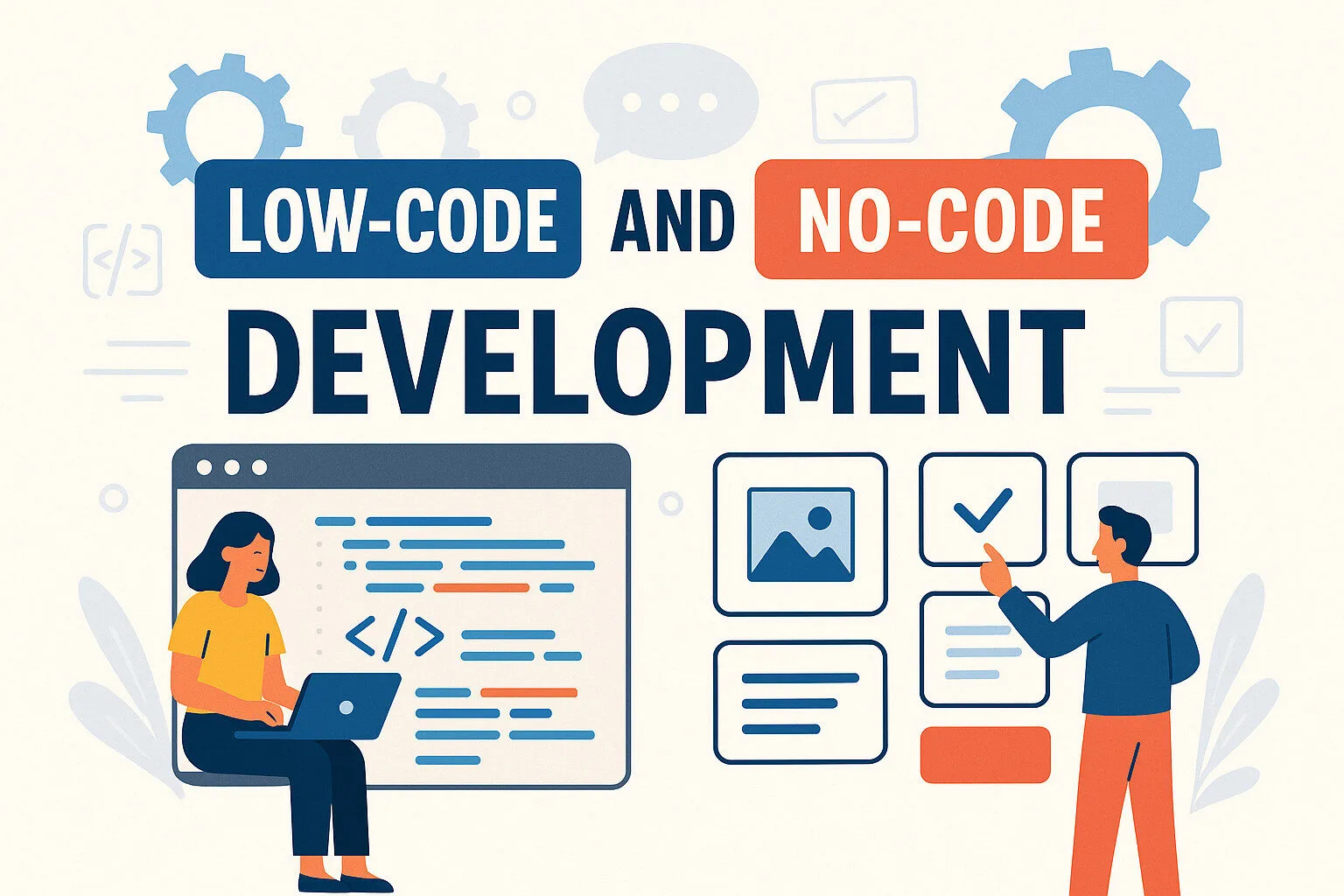Introduction: What is Low-Code and No-Code Development?
The digital revolution has birthed a wave of innovation that challenges the traditional notions of software development. At the heart of this transformation lie Low-Code and No-Code Development Platforms (LCDPs/NCDPs), which empower users with little to no programming knowledge to build sophisticated applications using intuitive, drag-and-drop interfaces.
These platforms are reshaping the software industry by making it more inclusive and efficient. Whether you’re a seasoned developer looking to speed up delivery or a business user with an idea but no coding background, low-code and no-code tools open new possibilities.
Section 1: The Rise of Low-Code and No-Code Platforms
According to Gartner, by 2025, over 70% of new applications developed by enterprises will use low-code or no-code technologies. This trend is being fueled by several key factors:
- Developer Shortage: The global demand for software developers continues to outpace supply.
- Business Agility: Organizations need to respond quickly to market changes.
- Democratization of Technology: Non-technical users want to build tools tailored to their needs.
These platforms have already gained a significant foothold across various industries, including finance, healthcare, and education, offering faster development cycles and lower costs.
Section 2: Key Features and Capabilities
Low-code and no-code platforms offer a wide range of features:
- Drag-and-Drop Interfaces
- Pre-built Templates
- Database Integration
- Workflow Automation
- Multi-Device Compatibility
- AI Assistance and Predictive Logic
These functionalities enable rapid prototyping and iteration, allowing businesses to go from idea to implementation in days instead of months.
Section 3: Benefits of Low-Code and No-Code Development
- Speed: Build applications in a fraction of the time compared to traditional development.
- Cost Efficiency: Reduce the need for large development teams.
- Accessibility: Empower business users to solve their own problems.
- Flexibility: Easily adapt and scale applications.
- Encourages Innovation: By lowering the barrier to entry, more people can experiment and create.
Related Read: Top Code Review Best Practices To Improve Custom Software Development Quality
Section 4: Challenges and Limitations
Despite their benefits, low-code and no-code platforms aren’t without drawbacks:
- Customization Limitations: Advanced features may require traditional coding.
- Security Concerns: Platforms may expose sensitive data if not properly managed.
- Scalability Issues: Some platforms may not scale well for enterprise-grade applications.
- Vendor Lock-In: You’re often limited to the capabilities of the chosen platform.
Related Read: Common Mistakes To Avoid Software Localization
Section 5: Use Cases and Success Stories
Low-code and no-code development has found success across multiple domains:
- Startups are building MVPs quickly without a large budget.
- Enterprises are creating internal tools for HR, finance, and customer support.
- Educators and non-profits are developing learning management systems and donation platforms.
Related Read: From Dreams To Code: How To Build A Career In Mobile App Development
Section 6: Future Outlook and Tech Trends
The future of software development is undeniably tied to low-code and no-code. Innovations in AI, machine learning, and cloud computing will further enhance these platforms, making them smarter and more versatile.
Expect tighter integration with DevOps, better support for mobile-first design, and AI-powered development suggestions.
Related Read: 12 Tech Trends To Watch In 2024: Prepare For The Future Now
Conclusion: Embracing the Shift
Low-code and no-code platforms represent a seismic shift in how we think about software creation. While they won’t replace traditional development entirely, they fill an essential gap by empowering more people to build and iterate quickly.
Businesses that embrace this technology will enjoy greater agility, reduced costs, and a culture of innovation. It’s no longer about if your organization should consider low-code/no-code—it’s about how soon you can implement it effectively.






Leave a Reply